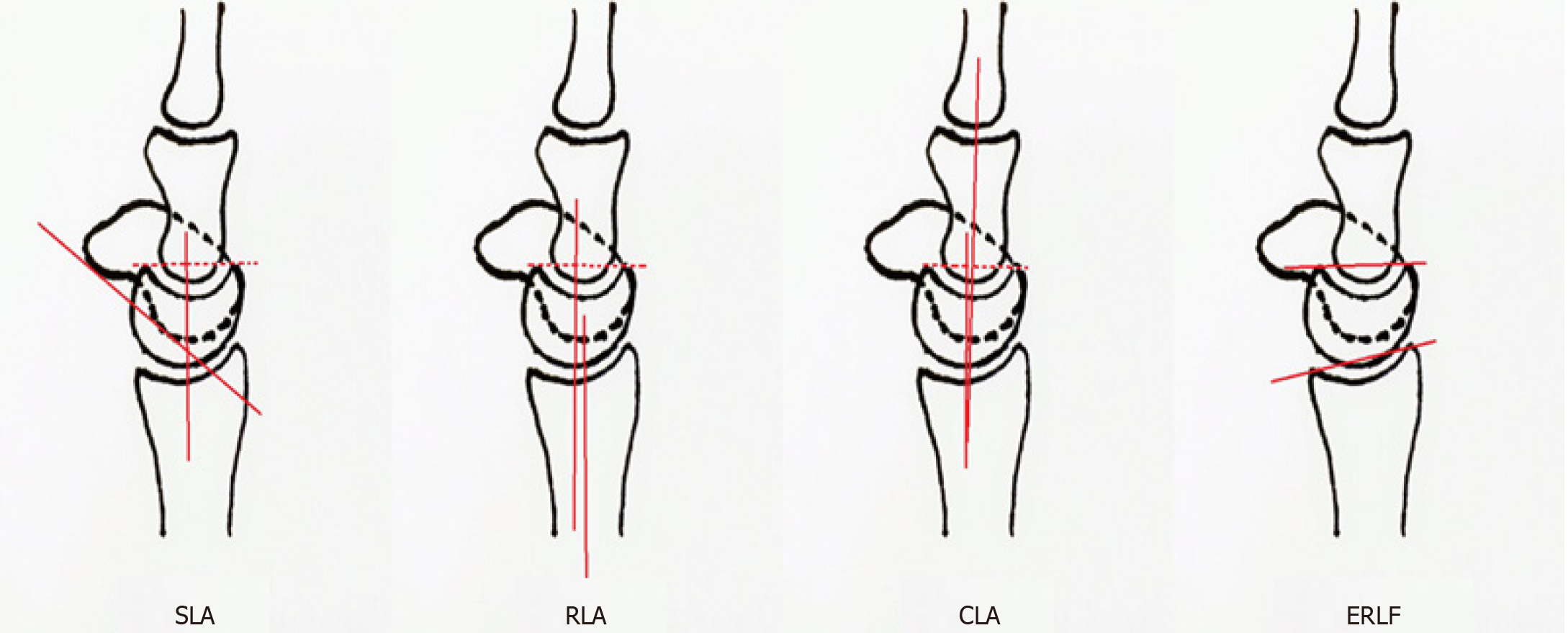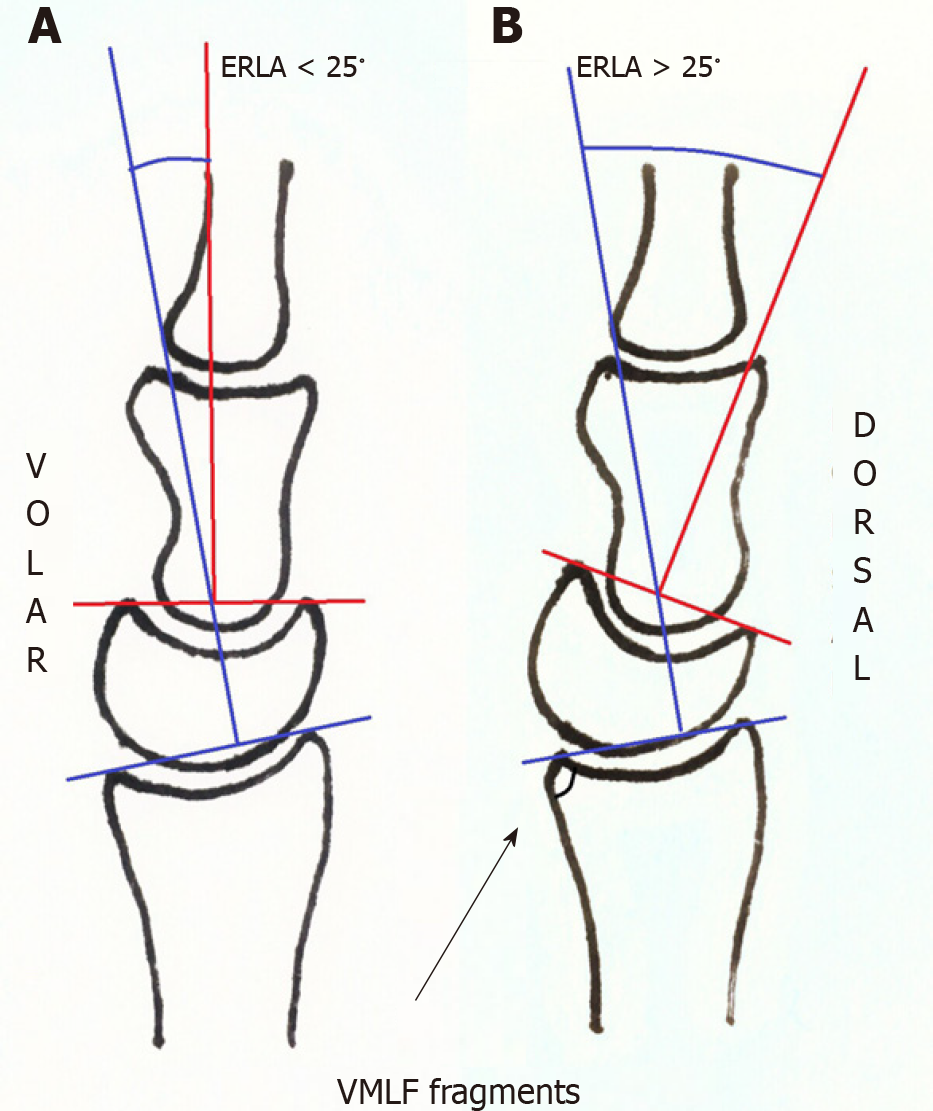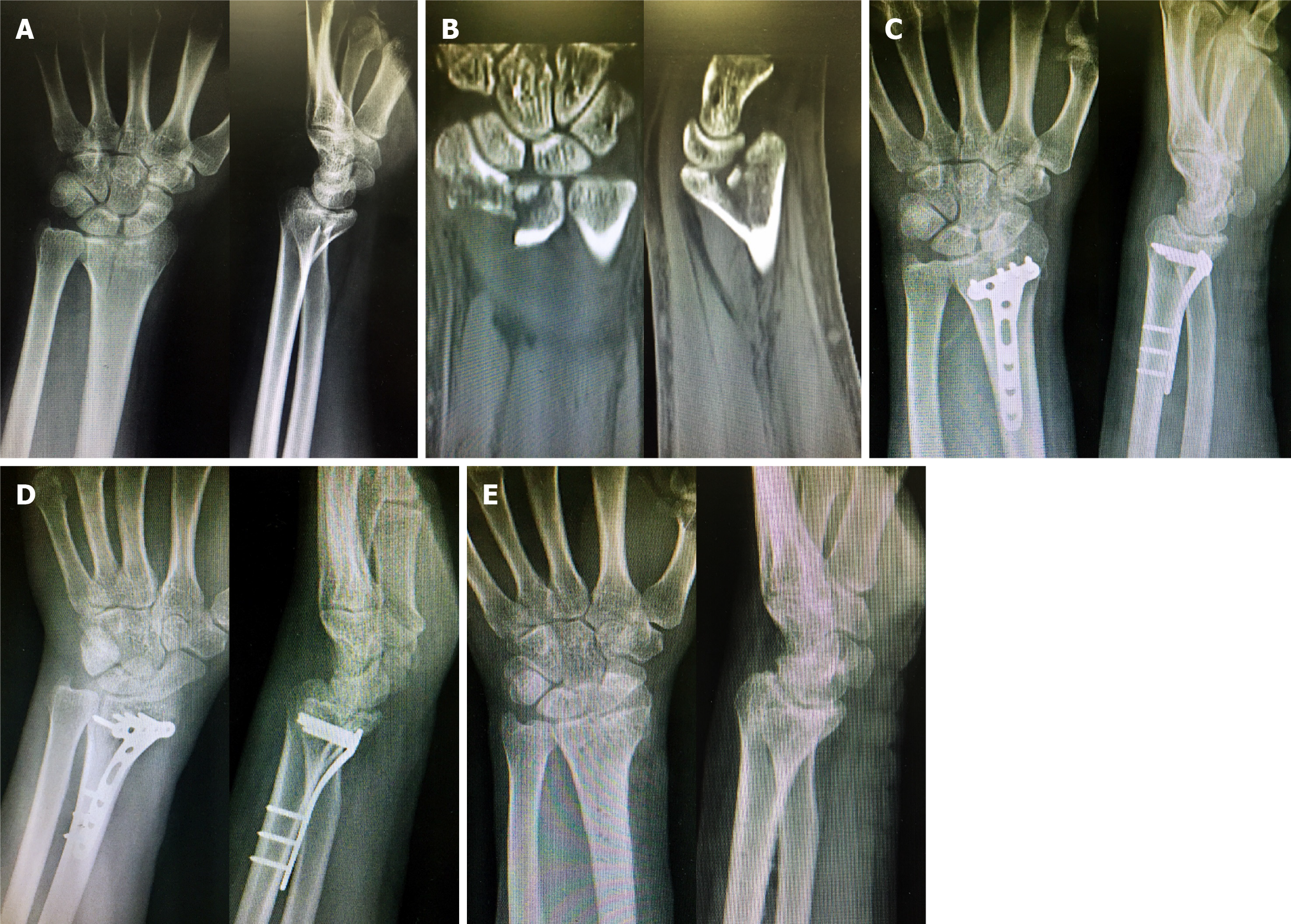Copyright
©The Author(s) 2021.
World J Clin Cases. Aug 26, 2021; 9(24): 7022-7031
Published online Aug 26, 2021. doi: 10.12998/wjcc.v9.i24.7022
Published online Aug 26, 2021. doi: 10.12998/wjcc.v9.i24.7022
Figure 1 Measured radiological parameters.
SLA: Scapholunate angle; RLA: Radiolunate angle; CLA: Capitolunate angle; ERLF: Effective radiolunate flexion.
Figure 2 Evaluation of the disability.
A: Distal radius fracture with effective radiolunate flexion (ERLF) < 25; B: Distal radius fracture with ERLF > 25. ERLF: Effective radiolunate flexion; VMLF: Volar margin of the lunate fossa.
Figure 3 A 39-year-old man from the unfixed group with distal radius fracture with volar margin of the lunate fossa fragment due to a traffic accident.
A and B: Preoperative X-ray and computed tomography; C: At 1 d posttrauma, open reduction and internal fixation with a volar locking plate and screws were performed. Immediately postoperatively, the X-ray showed a radiolunate angle (RLA) of -16° and effective radiolunate flexion (ERLF) of 19°; D: At 1 mo postoperatively, the X-ray showed that the RLA was -38°, and the ERLF was to 39°; E: This appearance persisted even after plate and screw removal at 1 year postoperatively. The Mayo score was 65, and the disabilities of the arm, shoulder, and hand score was 30.8.
- Citation: Meng H, Yan JZ, Wang B, Ma ZB, Kang WB, Liu BG. Influence of volar margin of the lunate fossa fragment fixation on distal radius fracture outcomes: A retrospective series. World J Clin Cases 2021; 9(24): 7022-7031
- URL: https://www.wjgnet.com/2307-8960/full/v9/i24/7022.htm
- DOI: https://dx.doi.org/10.12998/wjcc.v9.i24.7022















